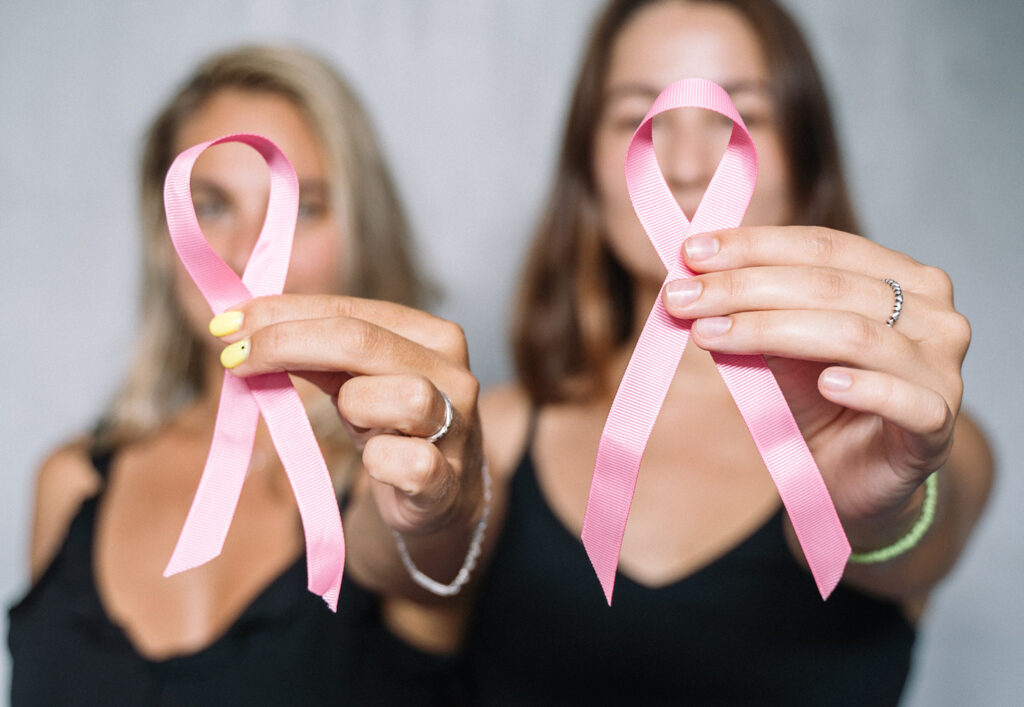
Changes in the breast, such as lumps or masses, typically trigger cancer concerns. But did you know most early breast cancers cause no symptoms? Breast cancer can present in different ways including a breast lump, changes in the nipple or skin, and bloody nipple discharge.
Being aware of your breasts makes you an active participant in your breast health and guides your provider as they examine and evaluate you.
The breast is a complex structure made up of mainly fat, and glandular and connective tissue. Being breast aware (a regular, five-minute visual and physical inspection) helps you learn your breasts’ unique makeup and characteristics both of which change cyclically and over time.
A young woman typically has denser breasts with more hormonally active tissue than an older woman who has gone through menopause. Beginning breast self-exam in your twenties is ideal, but any time is a good time.
Importance of Mammograms
In addition to regular self-examinations, women are encouraged to work with their clinician to ensure they’re acting on recommendations for regular mammograms. Proper screening is important for detecting cancer early – when it’s most likely to be curable, and mammography is the most common type of breast screening exam used to detect breast cancer in women. It is a quick, noninvasive x-ray that can find abnormal or changing breast tissue, and potentially detect cancer.
It is recommended that women who have no symptoms and are at average risk for breast cancer should begin screening mammography at age 40. For women ages 20 to 40, a clinical breast examination is suggested at least every three years. Every woman is different and as she ages, recommendations for screening are based on her current health status and overall breast cancer risk.
What If My Mammogram Is Abnormal?
Having regular mammograms is essential because they can help your provider detect changes in breast tissue, not just cancer. Many women feel anxious waiting for the results of a mammogram. It can be especially nerve-wracking if your provider calls you back for more testing. If you do get called back, try not to panic.
If your radiologist detects changes in your breast tissue, you will likely have further testing that could include:
- Additional mammography views. Getting called back after a screening mammography is common—it doesn’t always mean you have cancer. Sometimes the image isn’t clear, or you have a new finding that needs to be assessed in more detail. If you’ve a finding on mammogram and do not have previous mammograms for the doctor to compare with, you are likely to be called back for additional views.
- Breast ultrasound. If your radiologist finds a new spot on your mammogram or you have dense breast tissue, they may order an ultrasound of your breast. An ultrasound uses sound waves to examine breast tissue and can be very helpful in dense breasts.
- Breast MRI. An MRI of your breast is typically used if you are at high-risk for breast cancer—strong family history of breast cancer or genetic mutation such as BRCA1 or BRCA2.
- Breast biopsy. This procedure is recommended for tissue diagnosis. Having a biopsy does not mean you will have cancer but is the best way to find out if you do have cancer. A biopsy removes a small piece of tissue that a pathologist can examine for cancer cells. The biopsy can typically be done in an imaging suite using a small needle to collect tissue sample. A small clip or marker will then be placed in the area so it can be found easily in future mammograms and if surgery is necessary.
Regardless of your mammogram results, it’s important to understand that although mammography is the most effective way of breast screening, it doesn’t detect all breast cancer. Monitoring your breast health through regular self-examination and clinical examination is also essential.
Genetic Testing for Breast Cancer
Depending on your risk, your provider may also recommend genetic testing as a tool for breast health planning. It is rare to carry a genetic mutation and testing positive for a pathogenic mutation doesn’t mean that you will develop breast or ovarian cancer. Different gene mutation poses different level of risk.
Pathogenic mutation in BRCA 1&2 and some other genes are associated with significantly high breast cancer risk. In these cases, doctors recommend regular mammograms and breast MRIs for breast screening. Not having a mutation does not guarantee that you will not develop breast or ovarian cancer. In fact, these mutations are only responsible for 10% of all breast cancer cases.
You are the best advocate for your breast health. Learning how your breasts change, understanding your risks for breast cancer, living a healthy lifestyle, and receiving annual mammograms give you the best opportunity for detecting and treating any breast disease at its earliest stage.
Mohammad Tahir, M.D., is a surgeon with UPMC Breast Health Services and sees patients at UPMC’s Breast Health Center, UPMC Williamsport Divine Providence Campus, 1100 Grampian Blvd., Williamsport. For more information on breast health services offered at UPMC in North Central Pa., visit UPMC.com/BreastNCPA.




